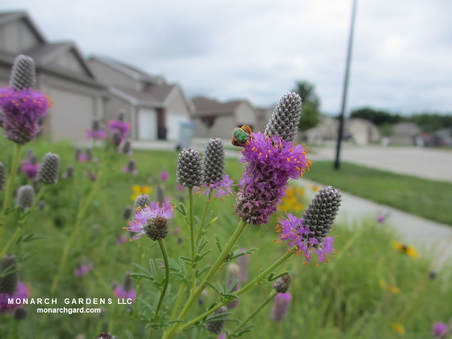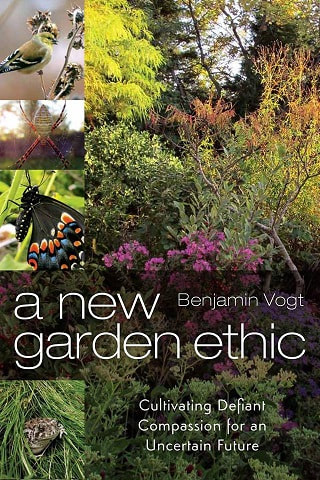Wood mulch has nothing on plants!
1) Wood mulch is touted as a way to improve soil and conserve soil moisture. It's true, it does these things, and can be valuable around newly-planted trees as well as an initial, one-time application at planting time for perennials. Soil organisms digest and incorporate wood mulch, building the upper layer over time, and mulch is great for saying "keep away" around tree trunks.
But thick layers of plant communities shade the soil with their leaves, which cool it down and robs sunlight from weed seedlings. Plant roots also rob water and nutrients from weed seedlings while amending soil naturally over time. Take prairie grasses -- 1/3 of their roots die each year, adding organic material. Many plants have evolved to punch down into clay and open up air and water passageways, while plants with fibrous roots can build up sandy and rocky soil so it holds more water over time.
3) Leaving plants up for winter helps them gather leaves around their bases, insulating them from winter cold, adding organic matter over winter and spring, and provides shelter for overwintering insects. The more plant layers and plant diversity you have, the more life you'll have thriving in your landscape.
Wood mulch is beneficial, yes, but doesn't hold a candle to more plants. If you can't afford a lot of plants, try to choose those that spread by seed or runners (wild geranium, purple poppy mallow, zigzag goldenod, solomon's seal, blue mistflower, etc). Consider planting just the ornamental flower layers with forbs and shrubs, then sow in a grass or sedge groundcover; we love to suggest sideoats grama for this purpose if you're working toward a stylized meadow look. Additionally, there are local and regional nurseries and growers that offer smaller plants for a smaller price, so you can buy more at once time. Some day, we hope the industry sells trays of plugs at nurseries to consumers planning larger beds.
Finally, look at the numbers and tally up how much money you spend on wood mulch each year. Is it around $200? In three years that's $600 -- money you could have put into more plants, which means more habitat and less work for you as that habitat grows.




 RSS Feed
RSS Feed

